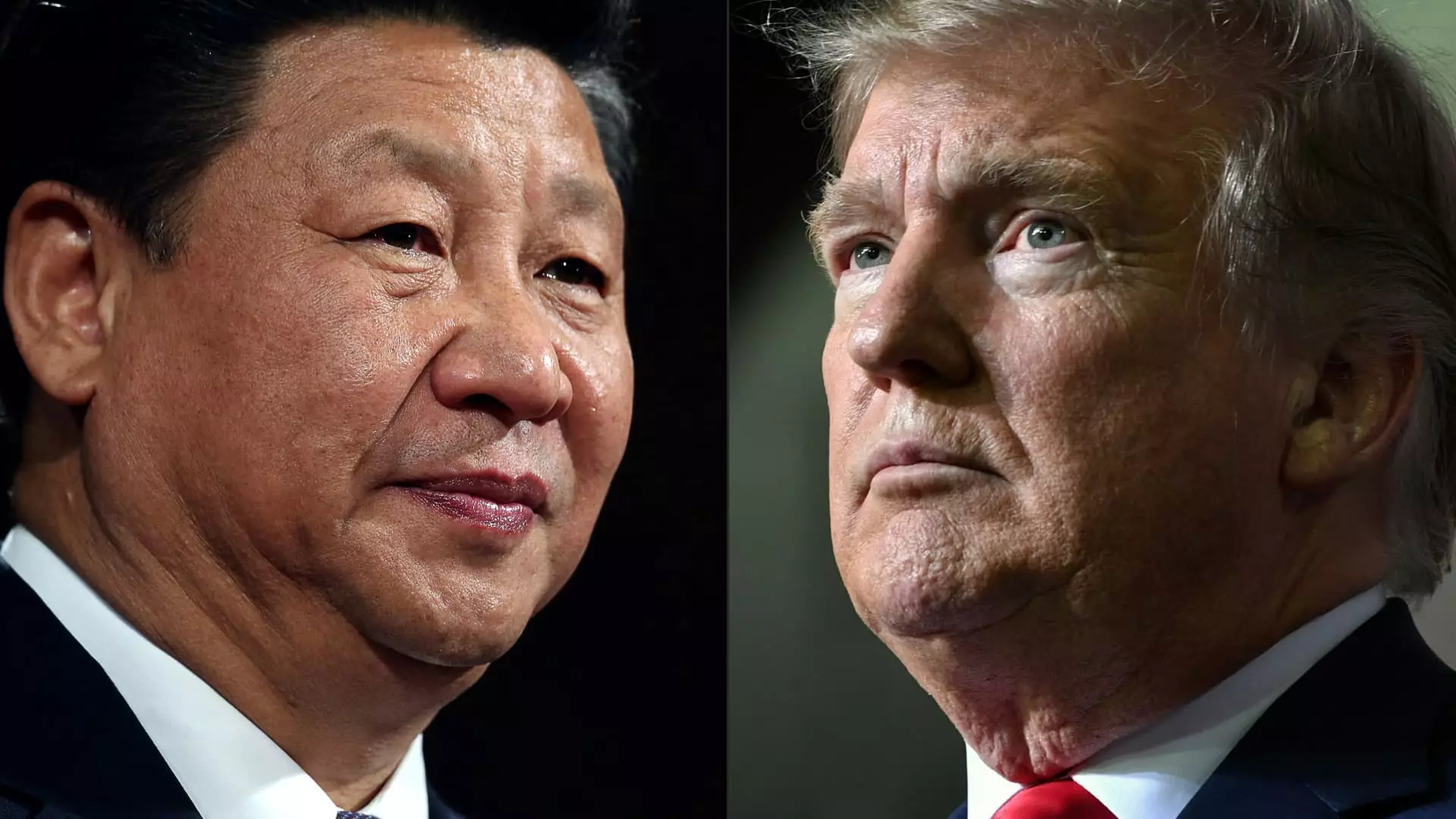In the ongoing saga of global trade tensions, the semiconductor industry has emerged as a critical battlefield, with China recently taking a stand against U.S. export controls it deems discriminatory. The U.S. has accused China of not adhering to preliminary trade agreements, setting the stage for an intense confrontation. The response from the Chinese government was swift, with Liu Pengyu, a spokesperson for the Chinese embassy in the U.S., speaking out against the U.S. imposition of restrictive measures that hinder bilateral trade and collaboration in advanced technology sectors. This exchange marks yet another episode in the protracted trade war which revolves significantly around artificial intelligence (AI) and the essential infrastructure required to foster technological innovation.
Trump’s Trade Accusations and Diplomatic Fallout
In a striking declaration, former President Donald Trump accused China of violating a previous trade agreement, reigniting tensions that have been simmering since the start of his administration. His claims were echoed by U.S. Trade Representative Jamieson Greer, who suggested that China was deliberately delaying compliance with the trade deal. This portrayal not only undermines the complexities of international negotiation but also reinforces a narrative that places blame squarely on China, potentially overlooking the multifaceted nature of trade dynamics. The diplomatic landscape has transformed into a blame game, with both sides unwilling to yield ground, as China urges the U.S. to amend what it perceives as erroneous policies.
China’s Call for Cooperation Amidst Tensions
China’s response is not merely one of indignation but also a call for cooperation. The Chinese embassy’s statement implores the U.S. to correct its course and foster a collaborative atmosphere in line with the “consensus reached at the high-level talks in Geneva.” Such calls for dialogue and cooperation are vital, especially in an era where technology transcends borders and international collaboration is imperative for progress in AI and other high-tech domains. The Chinese government’s demand reflects a willingness to engage constructively even amidst accusations and counterclaims, underscoring the intricate web of dependencies that characterize the global tech ecosystem.
Export Controls: A Double-Edged Sword
The U.S. has positioned its export controls as a component of national defense strategy, particularly since the ringing endorsement of such measures during the Trump era. The restrictions on companies like Huawei and limitations on chip technology exports to China underscore a belief that curbing China’s access to advanced technologies will hinder its ascent as a global leader in AI. However, as industry leaders like Nvidia have pointed out, these measures could backfire spectacularly. Instead of stifling innovation, they may catalyze an independent Chinese tech ecosystem that operates outside the purview of U.S. regulations. The warning issued by Nvidia CEO Jensen Huang—who declared that the U.S. assumptions about Chinese capabilities were profoundly misguided—serves as a stark indication that the repercussions of export controls may extend far beyond immediate trade metrics.
The Economic Stakes: Billions on the Line
The financial implications of these emerging trade realities are monumental. Nvidia, for instance, estimates it could lose approximately $8 billion in potential sales due to restrictions on its H20 chip, which was specially designed to meet regulatory standards. Such figures are not merely corporate losses; they represent a broader economic consequence of the geopolitical chess game. The impact on innovation, research and development, and ultimately, market competitiveness cannot be overstated. As companies grapple with these restrictions, the potential for a major shift in the global tech landscape grows.
The Future: Anticipating Industry Shifts
Looking ahead, the tech industry stands at a crossroads, confronted with the implications of ever-tightening export regulations. Companies may need to pivot their strategies, investing in alternative solutions or positioning themselves to cater to a more insular tech environment. The introduction of a simpler chip export rule is looming, potentially further shaping the landscape. Meanwhile, as China enhances its technological endeavors, the pressure for innovation will only escalate. The future of the semiconductor industry will be marked not only by competition but also by the necessity for agile responses to a rapidly evolving geopolitical climate.
The declaration of a decisive shift in the global chip ecosystem is more than just a reflection of trade policies; it is a harbinger of the transformation that awaits as countries navigate the convoluted and often treacherous waters of international technology and trade relations.

